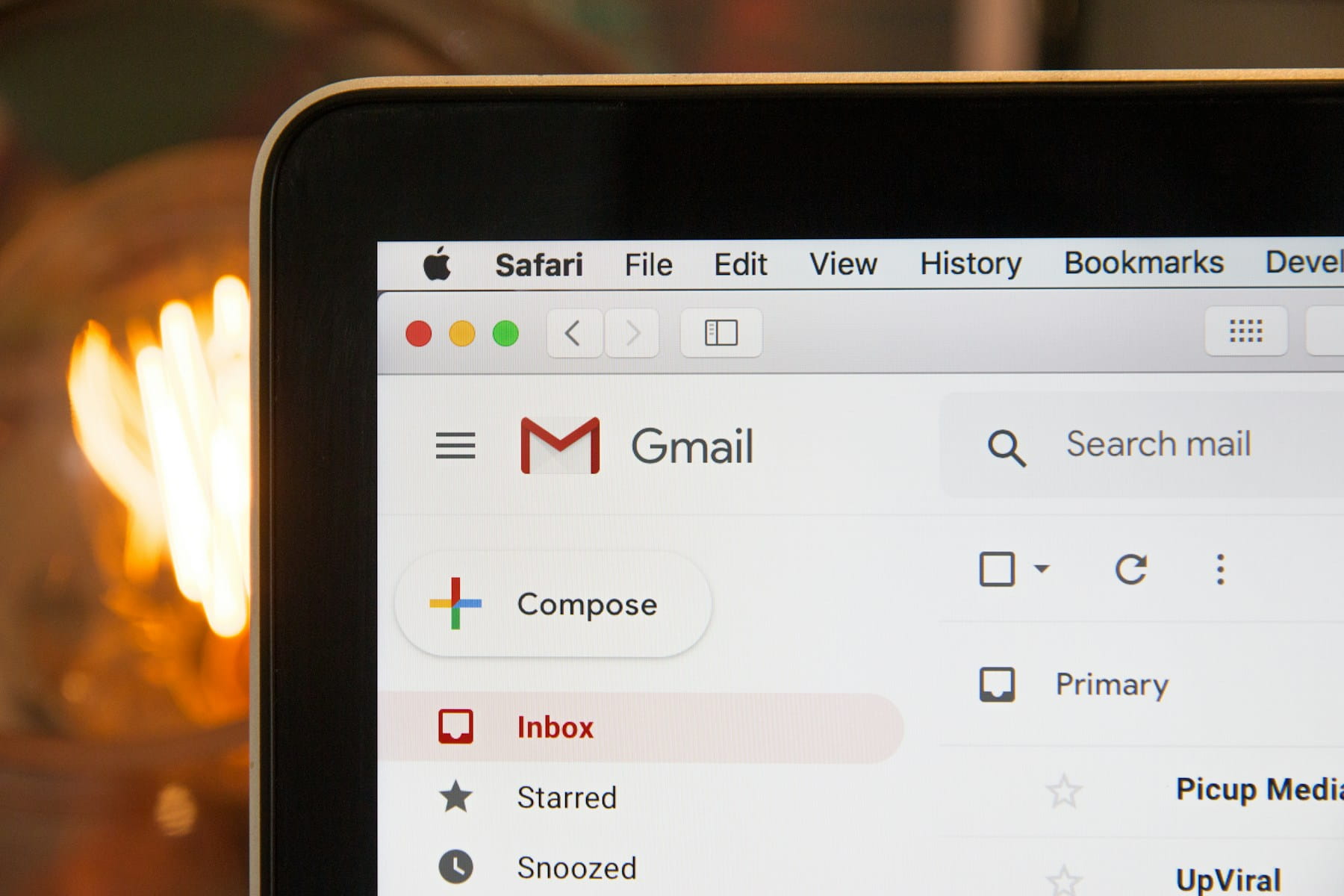Why emails go to spam and how to fix deliverability issues
Your emails mean nothing if they never reach their destination. While crafting perfect subject lines and designing beautiful templates captures most of the attention, the technical infrastructure that actually gets your messages into inboxes operates behind the scenes—and frankly, it's where the real magic happens.
Email deliverability encompasses the complex web of protocols, authentication methods, and reputation factors that determine whether your carefully crafted messages land in the primary inbox, get filtered into spam, or disappear entirely. The difference between 95% and 85% deliverability might seem small, but it represents thousands of lost opportunities for most businesses.
Table of contents
- What affects email deliverability
- Authentication protocols that build trust
- IP reputation and warming strategies
- Domain reputation factors
- Content signals that trigger filters
- List hygiene and engagement metrics
- Infrastructure considerations for delivery
- Monitoring and troubleshooting delivery issues
- Advanced deliverability tactics
- Building long-term sender reputation
What affects email deliverability
Email service providers evaluate hundreds of signals when deciding where to place your messages. Think of it as a credit score system—except instead of financial history, they're analyzing your sending behavior, technical setup, and recipient interactions.
The primary factors fall into several categories that work together to create your overall sender reputation. Authentication comes first. Without proper SPF, DKIM, and DMARC records, you're essentially sending mail without a return address—immediately suspicious to receiving servers.
Infrastructure plays a major role too. The IP addresses you send from, the domains in your email headers, and even the sending server's configuration all contribute to how mailbox providers perceive your messages. A shared IP with poor reputation can sink your deliverability, while a dedicated IP requires careful warming to build trust.
Content analysis has become increasingly sophisticated. Modern spam filters don't just look for obvious trigger words anymore. They analyze sending patterns, engagement rates, and even the HTML structure of your emails. A perfectly legitimate message can still land in spam if the technical execution is sloppy.
Recipient behavior creates the strongest signals of all. High open rates, clicks, and replies tell providers that people want your emails. Conversely, spam reports, unsubscribes, and low engagement rates signal that your messages aren't welcome. This creates a feedback loop where good deliverability leads to better engagement, which improves deliverability further.
List quality amplifies every other factor. Sending to invalid addresses, role accounts, or disengaged subscribers damages your reputation across all metrics. Even with perfect technical setup, a dirty email list will torpedo your delivery rates.
Authentication protocols that build trust
Email authentication protocols serve as digital signatures that verify you're authorized to send emails from your domain. Without these protocols properly configured, you're fighting an uphill battle against increasingly strict spam filters.
SPF (Sender Policy Framework) creates a whitelist of IP addresses authorized to send email for your domain. When a receiving server gets your message, it checks the SPF record in your DNS to confirm the sending IP is legitimate. A simple SPF record might look like v=spf1 include:_spf.google.com ~all, which authorizes Google's servers to send on your behalf while softly failing unauthorized sources.
But SPF has limitations. It doesn't survive email forwarding well, and it only validates the envelope sender address (which recipients never see). That's where DKIM steps in.
DKIM (DomainKeys Identified Mail) uses cryptographic signatures to verify that your email content hasn't been tampered with during transit. Your sending server signs each message with a private key, while the corresponding public key gets published in your DNS records. Receiving servers can then verify the signature matches, confirming both authenticity and integrity.
The real power emerges when you implement DMARC (Domain-based Message Authentication, Reporting, and Conformance). DMARC ties SPF and DKIM together, telling receiving servers what to do when authentication fails. A DMARC policy might instruct servers to quarantine unauthenticated messages or reject them outright.
Setting up these protocols requires careful planning. Your DMARC policy should start with p=none to monitor authentication results without affecting delivery. As you identify and fix authentication issues, you can gradually move to p=quarantine and eventually p=reject for maximum protection. For detailed guidance on configuring these authentication records, refer to our comprehensive guide on DNS email records.
Many senders overlook the alignment requirements in DMARC. For SPF alignment, the domain in the Return-Path header must match (or be a subdomain of) the From domain. DKIM alignment requires the signing domain to match the From domain. These alignment checks prevent attackers from using legitimate domains to spoof your brand.
IP reputation and warming strategies
IP reputation operates like a credit score for email sending. Internet service providers track the behavior associated with each IP address, building profiles that influence delivery decisions. A single IP with poor reputation can affect deliverability across all domains sending from it.
Shared IPs pool multiple senders together, spreading both risk and reputation. While cost-effective for smaller senders, you're at the mercy of other users' behavior. One bad actor can damage the entire pool's reputation, suddenly causing your legitimate emails to land in spam folders.
Dedicated IPs give you complete control over reputation, but they require patient warming strategies. New IPs have no reputation history, making providers cautious about accepting large volumes. The warming process involves gradually increasing send volumes while maintaining excellent engagement metrics.
A typical IP warming schedule starts with 50-100 emails on day one, doubling daily while monitoring delivery rates and spam placement. The process takes 4-6 weeks to establish solid reputation, assuming consistent positive engagement. Rushing this process by sending large volumes immediately almost guarantees deliverability problems.
During warming, focus on your most engaged subscribers first. High open rates and click-through rates create positive reputation signals that benefit all future sends. Save broader list segments for later in the warming process when your IP has established trust with major providers.
Geographic distribution affects IP reputation too. An IP that suddenly starts sending to different countries or regions can trigger fraud alerts. If you plan to expand internationally, warm up gradually by introducing new geographic segments slowly.
IP reputation isn't static—it requires ongoing maintenance. Sudden spikes in volume, drops in engagement, or increases in spam complaints can quickly damage a previously strong reputation. Regular monitoring helps catch issues before they become serious problems.
Domain reputation factors
While IP reputation gets most of the attention, domain reputation has become equally important for deliverability. Major email providers now track sending behavior at the domain level, creating reputation profiles that can override IP-based decisions.
Your sending domain choice significantly impacts reputation building. Using your main business domain for email marketing can put your entire domain at risk if deliverability issues arise. Many organizations create dedicated subdomains for different email types—marketing.company.com for promotions, transactional.company.com for receipts and notifications.
Domain age plays a role in reputation. Newly registered domains face additional scrutiny, as they're often associated with spam operations. If you must use a new domain, expect a longer reputation-building period and extra attention to engagement metrics.
The domain in your From address carries more weight than other header domains. Recipients see this domain, and their interactions (opens, clicks, spam reports) directly influence its reputation. Keep your From domain consistent to build recognition and trust with both recipients and email providers.
Link domains within your email content also affect reputation. Using URL shorteners or suspicious-looking domains can trigger spam filters. Stick to your own domains or well-established, trusted domains for links. If you must use tracking domains, ensure they're properly configured and have positive reputation.
DNS configuration affects domain reputation beyond just authentication records. Missing or misconfigured MX records, suspicious TXT records, or associations with known bad actors can all damage domain reputation. Regular DNS audits help catch configuration issues before they impact delivery.
Subdomain reputation can influence parent domain reputation, though the relationship isn't always straightforward. A compromised subdomain might not immediately affect the parent domain, but persistent issues can eventually spread reputation damage across the entire domain structure.
Content signals that trigger filters
Modern spam filters analyze content using sophisticated machine learning algorithms that look far beyond simple keyword matching. The days of avoiding words like "free" or "guarantee" are mostly behind us—today's filters evaluate context, sender reputation, and recipient behavior alongside content analysis.
Email structure plays a larger role than specific words. Messages with poor HTML coding, broken links, or suspicious attachment types trigger filters regardless of the actual content. Clean, professional HTML that renders consistently across email clients signals legitimacy to filtering systems.
Image-to-text ratios matter significantly. Emails that consist primarily of images with minimal text often get flagged, as this technique is commonly used to hide spam content from text-based filters. Aim for a balanced mix of text and images, ensuring your message remains coherent even if images don't load.
Subject line patterns can trigger filters, but context matters more than individual words. A subject line that seems disconnected from the sender's typical content or industry can raise red flags. Consistency between subject lines, sender names, and email content helps establish trust.
Link analysis has become increasingly sophisticated. Filters don't just check if links lead to suspicious domains—they analyze the entire link structure, looking for redirects, cloaked URLs, or patterns associated with malicious content. Using clean, direct links to reputable destinations improves deliverability.
Personalization signals can work both ways. Proper personalization using recipient names or account information can improve deliverability by showing you have a legitimate relationship with the recipient. However, fake personalization attempts or using personal information inappropriately can trigger privacy-focused filters.
List hygiene and engagement metrics
List quality directly impacts every aspect of deliverability. Sending to invalid addresses, role accounts, or unengaged subscribers creates negative signals that damage your reputation across all providers. Regular list maintenance isn't optional—it's essential for sustainable email programs. For specific tactics to prevent your emails from landing in spam folders, explore our detailed guide on how to prevent emails from going to junk.
Bounce management requires systematic handling of different error types. Hard bounces (permanent failures) should be removed immediately, as continuing to send to invalid addresses signals poor list management. Soft bounces (temporary failures) need monitoring—addresses that soft bounce repeatedly should eventually be removed or suppressed.
Engagement tracking reveals list health beyond basic delivery metrics. Open rates, click-through rates, and time spent reading emails all influence algorithmic decisions about where to place your future messages. Subscribers who never engage with your emails drag down overall performance.
Unsubscribe management affects both compliance and deliverability. Making unsubscribes difficult or ignoring requests leads to spam complaints, which are far more damaging to reputation than clean unsubscribes. Honor unsubscribe requests promptly and make the process straightforward.
Re-engagement campaigns can help clean lists while preserving valuable subscribers. Before removing inactive subscribers, attempt to re-engage them with targeted campaigns asking about their preferences or offering incentives to stay subscribed. This approach often recovers 10-15% of inactive subscribers while identifying truly disengaged addresses for removal.
Segmentation improves engagement by sending more relevant content to specific subscriber groups. Higher engagement rates from targeted segments improve your overall sender reputation, creating a positive feedback loop that benefits your entire email program.
Spam trap detection requires ongoing vigilance. Pristine spam traps (email addresses created solely to catch spammers) and recycled spam traps (old addresses repurposed as traps) can devastate your reputation if you send to them. Regular list validation services help identify potential traps before they cause damage.
Infrastructure considerations for delivery
Email infrastructure choices significantly impact deliverability, often in ways that aren't immediately obvious. The servers you use, how you configure them, and how you manage sending patterns all contribute to your overall reputation profile.
Server configuration affects how receiving systems perceive your messages. Properly configured reverse DNS (PTR records) that match your sending domains signal professionalism. Mismatched or missing PTR records suggest poor technical management, which correlates with spam sending in many providers' algorithms.
Sending patterns influence algorithmic decisions about your messages. Sudden volume spikes, unusual sending times, or irregular frequency can trigger automated suspicions. Consistent, predictable sending patterns help establish trust with receiving systems.
Multiple IP addresses require careful management to avoid reputation fragmentation. Using different IPs for different email types (transactional vs. marketing) can protect critical message delivery, but switching between IPs randomly can prevent any single IP from building strong reputation.
SMTP authentication and encryption demonstrate technical competence to receiving servers. Supporting modern TLS encryption and proper SMTP authentication protocols shows you're maintaining current security standards, which correlates with legitimate sending practices.
Rate limiting prevents overwhelming receiving servers while protecting your reputation. Sending too many messages too quickly to a single provider can trigger automatic deferrals or rejections. Implementing appropriate rate limits for different providers optimizes delivery speed while respecting their preferences.
Feedback loop processing helps identify reputation issues quickly. Major providers offer feedback loops that notify you when recipients mark your messages as spam. Processing these signals promptly and adjusting your practices accordingly demonstrates responsible sending behavior.
Monitoring and troubleshooting delivery issues
Effective deliverability monitoring requires tracking multiple metrics across different dimensions. Single metrics like delivery rate or open rate don't provide complete visibility into potential issues developing in your email program.
Postmaster tools from major providers offer direct insights into how they perceive your sending. Google Postmaster Tools, Microsoft's Smart Network Data Services, and similar offerings from other providers show reputation metrics, authentication results, and delivery data that aren't visible through standard analytics.
Authentication monitoring helps catch configuration issues before they impact delivery. Regular checks of SPF, DKIM, and DMARC alignment prevent authentication failures that can suddenly damage your reputation. DMARC reports provide detailed feedback about authentication results across all your email traffic.
Delivery timing analysis reveals potential filtering issues. Messages that consistently take longer to deliver to certain providers might indicate reputation concerns or content filtering delays. Tracking delivery times alongside placement rates (inbox vs. spam folder) provides deeper insight into provider behavior.
Engagement pattern analysis helps identify list quality issues early. Sudden drops in open rates or click-through rates often precede delivery problems, as algorithmic systems use engagement data to inform filtering decisions. Monitoring these patterns across different recipient segments helps isolate potential issues.
Blacklist monitoring catches external reputation problems quickly. While most legitimate senders won't appear on major blacklists, monitoring for listings helps identify compromised systems or processes that might damage your reputation. Regular blacklist checks should be part of routine maintenance.
Template and content testing helps identify elements that might trigger filtering. A/B testing different subject lines, content formats, or sending patterns can reveal what works best for your specific audience and helps optimize for both engagement and deliverability.
Advanced deliverability tactics
Beyond basic authentication and list management, advanced tactics can significantly improve email performance for sophisticated senders. These strategies require more technical expertise but offer substantial benefits for high-volume or critical email programs.
Subdomain strategy allows granular reputation management across different email types. Creating separate subdomains for transactional emails, marketing campaigns, and automated sequences prevents issues in one area from affecting others. This approach requires more complex DNS management but provides valuable isolation.
Content variation reduces the risk of algorithmic filtering based on repetitive patterns. Slightly varying email templates, subject line structures, and sending schedules prevents your messages from appearing too automated or template-driven to sophisticated filters.
Geographic optimization recognizes that different regions have varying filtering aggressiveness and cultural expectations. Tailoring sending times, content styles, and even authentication configurations to regional preferences can improve deliverability in international markets.
Provider-specific optimization acknowledges that Gmail, Outlook, Yahoo, and other providers have different filtering priorities and preferences. Adjusting strategies based on recipient distribution across providers helps optimize overall performance.
Feedback loop integration goes beyond basic spam complaint processing. Analyzing feedback loop data for patterns, response times, and correlation with other metrics provides insights into recipient satisfaction and potential reputation issues.
Predictive analytics can identify deliverability trends before they become problems. Machine learning models that analyze historical delivery data, engagement patterns, and external factors can predict potential issues and suggest preventive actions.
Building long-term sender reputation
Sustainable email deliverability requires thinking beyond individual campaigns to build lasting relationships with both recipients and email providers. Long-term reputation building involves consistent practices that demonstrate reliability and respect for recipient preferences.
Brand consistency across all email touchpoints helps recipients recognize and trust your messages. Using consistent sender names, email addresses, and visual branding makes your emails immediately identifiable, reducing the likelihood of spam reports from confused recipients.
Permission management goes beyond basic opt-in requirements to create transparent, flexible subscription preferences. Allowing recipients to choose email frequency, content types, and communication preferences reduces unsubscribes and spam complaints while improving engagement metrics.
Quality over quantity becomes increasingly important as filtering algorithms become more sophisticated. Sending fewer, highly relevant messages to engaged subscribers typically produces better deliverability results than high-volume campaigns to broad audiences.
Relationship building with email providers through proper feedback loop participation, prompt abuse handling, and adherence to best practices creates positive associations that benefit long-term reputation. Providers remember senders who consistently follow good practices.
Continuous education about deliverability changes helps maintain performance as the landscape shifts. Email filtering algorithms, authentication requirements, and provider policies change regularly. Staying current with these changes prevents reputation damage from outdated practices.
Documentation and process standardization ensure consistent practices across team members and campaigns. Clear guidelines for list management, content creation, and technical configuration prevent accidental reputation damage from inconsistent implementation.
Regular auditing of all email practices, from list acquisition methods to technical configuration, helps identify potential issues before they impact deliverability. Quarterly reviews of authentication records, list quality metrics, and engagement trends provide opportunities for proactive improvements.
Ready to take control of your email deliverability? SelfMailKit provides the infrastructure flexibility you need to optimize delivery rates while maintaining cost efficiency. Whether you prefer self-hosting, managed cloud services, or connecting your own AWS SES, our platform gives you the technical control necessary to build and maintain excellent sender reputation. Try SelfMailKit today and experience reliable transactional email delivery at scale.






